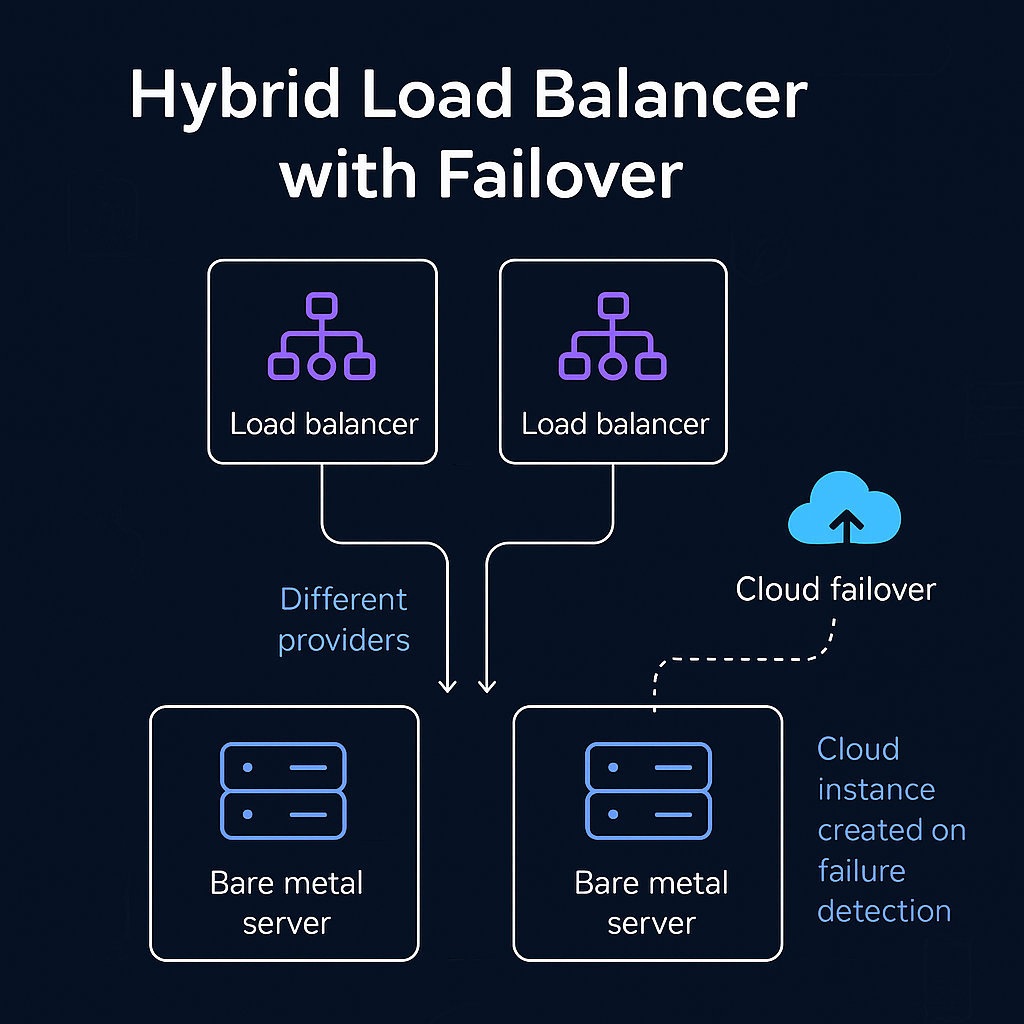Redefining Hybrid Cloud Resilience with LayerOps: A New Era for Load Balancing

In the ever-evolving cloud landscape, flexibility and resilience are no longer just nice-to-haves—they're foundational. And LayerOps is taking that reality a step further with its latest feature: Hybrid Cloud Load Balancers with Smart Failover.
This new capability marks a meaningful shift in how we think about high availability and performance in hybrid and multi-cloud environments. Instead of being tied to a single provider’s managed load balancing solutions—or overengineering complex Kubernetes ingress setups—LayerOps allows you to deploy your own public-facing load balancers on bare metal servers, with the added bonus of automated failover to public cloud.
How it works
Let’s take a real-world example to see just how powerful this is.
Imagine you’re running your services across two dedicated bare metal servers hosted at two different providers—say, Hetzner and Scaleway. On each of these servers, you deploy a LayerOps Load Balancer (External). These are lightweight, container-based services that act as your entry point, with full support for TCP, UDP, and HTTPS traffic.
Now, here’s where the magic happens. If either load balancer goes down—say due to a hardware issue, a local outage, or maintenance—LayerOps automatically spins up a replacement load balancer instance at one of the eight supported public cloud providers, such as OVHCloud, Exoscale, or even AWS.
There’s no manual intervention needed, no scrambling to reroute traffic. Your services remain online, your users happy.
Why it matters
This hybrid-first architecture brings a ton of benefits:
- Cost Optimization: Bare metal servers are often significantly cheaper for long-term workloads. Now, you can use them for critical services without compromising on high availability.
- Performance Gains: By placing load balancers as close as possible to your user base—on your own machines—you reduce latency and network hops.
- Provider Independence: You’re not locked into a single vendor’s networking stack. You can mix and match, avoid vendor lock-in, and tailor deployments to your budget and compliance needs.
- Automatic Resilience: Failover isn’t just a feature—it’s embedded into the platform logic, ensuring you never get caught off guard.
Looking ahead
Hybrid cloud isn’t just about mixing resources—it's about making them work together intelligently. With this new load balancing feature, LayerOps proves once again that operational excellence and sovereignty can go hand in hand.
Whether you're a SaaS startup or a government cloud architect, this level of control and resilience gives you the tools to build infrastructure that’s ready for anything.
And best of all? No Kubernetes expertise required.